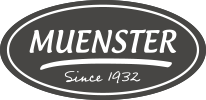Your horse’s performance and overall health are largely contingent on one system functioning well: the digestive tract. It’s the site where nutrients are absorbed and converted into energy. It’s also responsible for killing off any harmful microorganisms that could cause illness or infection.
If the delicate balance of your horse’s digestive system is upset, they can experience a number of negative consequences including lack of energy, irritability, difficulty bending to graze, and overall discomfort.
To keep its digestive tract functioning at optimal levels, your horse must ingest enough fiber. It is arguably the most important ingredient in an equine’s diet. Consuming a daily minimum of 1.5% of its bodyweight is the only way for your horse’s system to maintain essentials like eating, breathing, sleeping and other key metabolic functions.
Ready to brush up on your fiber basics? Here’s what you need to know to keep your horse at peak health.
An Introduction to Fiber
Understanding what fiber consists of is an important first step to selecting the right horse feed. Fiber emerges from a plant’s cell wall and different components react differently once ingested. It can be best understood in three parts: digestible cellulose and hemicellulose, and indigestible lignin.
Mature crops have an increased concentration of lignin, making them difficult if not impossible to digest. Conversely, hemicellulose, and especially cellulose, provides horses with the largest supply of digestible energy.
What Happens to Horses Without Ample Fiber?
Inadequate fiber intake is the quickest way to create a dangerous imbalance in your horse’s digestive tract. Over time the entire system will begin to malfunction. This can lead to bouts of dehydration, colic, and an inability to conserve electrolytes. Other food particles have trouble making their way down the gut, causing it to “pack”.
Additional issues that arise from lack of fiber include:
- Diarrhea
- Lethargy
- Boredom
- Cribbing
- Insatiable hunger
- Sand colic
Veterinarians also see fiber deficiencies leading to ailments like laminitis and other abnormal behaviors such as chewing on stable wood that can develop in response to malnutrition.
Why is Quality Fiber so Critical for Horses?
Feeding horses quality cellulose-based fiber is the most basic requirement for providing enough energy dense nutrition.
With a host of specially adapted bacteria in the cecum and colon, horse’s digestive systems are specially made to transform fiber into volatile fatty acids (VFAs). In this form, horses are able to absorb up to 70% of their daily digestible energy needs.
What Ingredients to Look for in High Fiber Horse Feeds
The biggest concern when switching to a high fiber diet is the issue of caloric intake. In general, it is believed that the higher the fiber content, the lower the calorie-count. Thus making the quality of the fiber used in manufacturing feeds all the more important.
Again and again, beet pulp is praised for its highly digestible fiber and sufficient calorie content. You can also check for ingredients like soy hulls, wheat midds, and alfalfa meal, which are considered ‘quality’ enough to meet the fiber and caloric needs of your horse.
Want to start your horse on a steady regimen of quality fiber-rich horse feed? Check out our U.S. made horse food products, designed for optimal digestion and nutrient absorption.
Photo Courtesy Flickr/Tiia Monto



